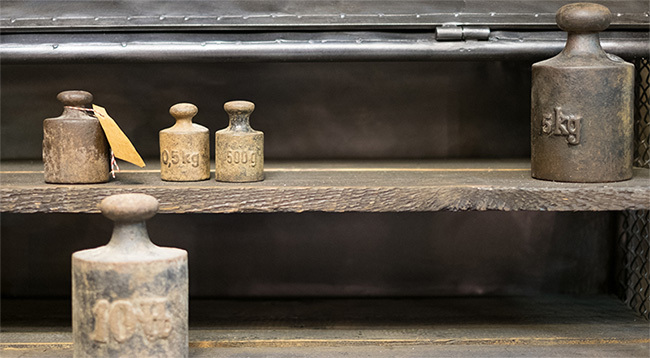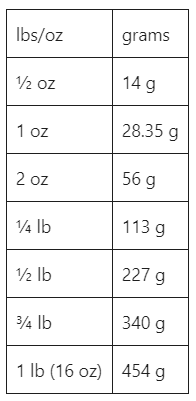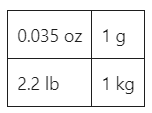Common Weight Conversions

In the UK, we officially use the metric systems for most weight, length and capacity measurements.
Our professional weighing scales use grams, and kilograms. However, we often use imperial measurements such as ounces and gallons as well as metric measurements.
If you were to follow an old recipe book, the weight of the ingredients required would be listed as the imperial measurement of pounds (lb) and ounces (oz). Whereas modern recipes use grams (g) as a measurement, or in some cases a mixture of the two. Another example of using both systems in the UK is that we often weigh our body weight in stones and pounds, but weigh items such as luggage in kilograms (kg).
The majority of the world uses the Metric System of measurement, whereas the USA has a system based on the old British Imperial System.
What is the Metric System & When is it Used?
First adopted in France 1795 as an act to unify the country after the French Revolution, the metric system recognised and established the metre by measuring one ten-millionth of the quadrant of Earth’s circumference, from the North Pole to the Equator, through the city of Paris. The metric system is the official measurement system for around 90% of countries including former British Empire countries such as Australia and Canada, which began conversion in the 1970s.
Fundamental units of this International System of Units (SI) include the metre for length, kilogram for mass, second for time, ampere for electric current, Kelvin for temperature (which is often replaced with Celcius) mole for amount of substance in chemistry and candela to measure luminous intensity.
The gram is internationally recognised as the basic unit of measurement for weight and mass in the metric and SI measurement systems. It is often used to weigh small items such as kitchen ingredients. The most accurate way to measure any item in grams is to use a weighing scale.
For an idea of how heavy a gram is, consider that a regular paperclip weighs about 1 gram. A kilogram is then the equivalent of 1,000 grams, and 1,000 kilograms is 1 tonne.
What is the Imperial System & When is it Used?
The British Imperial System was the official weights and measure system of the UK from 1824 until 1965 when we adopted the Metric System. It was created to standardise measurements for weight and length units such as pounds and feet, as they had different meanings in different places.
The US customary system is based on the original British Imperial Units used before the 1824 Weights and Measures Act. Liberia and Myanmar also officially use the Imperial system. It would prove a long and expensive process for the entire countries infrastructure to convert to the metric system.
In terms of the Imperial System vs the Metric System, you could argue that the metric system is more efficient as it is more of a universal standard and the measurements relate to each other. However, if you are used to weighing and measuring using the imperial system, you may find it more familiar and therefore easier to use.
Imperial to Metric Common Weight Conversions
Metric units can easily convert by multiplying or dividing by powers of ten whereas there is no simple way of converting imperial units. If you’re measuring the weight or mass of an item, take a look at some of these common unit conversions.



Fundamental Units Comparison Chart
For reference, take a look at some of the other units used for different measurements in the Imperial and Metric Systems.

Related Products
For more information on Marsdens products, including our Class III approved scales, you can click here, call our team on 01709 364296, or contact us here.
Further Reading
Discover the difference between mass and weight.
Have you ever wondered how do weighing scales work?
Take a look at these seven uses of a weighing scale.